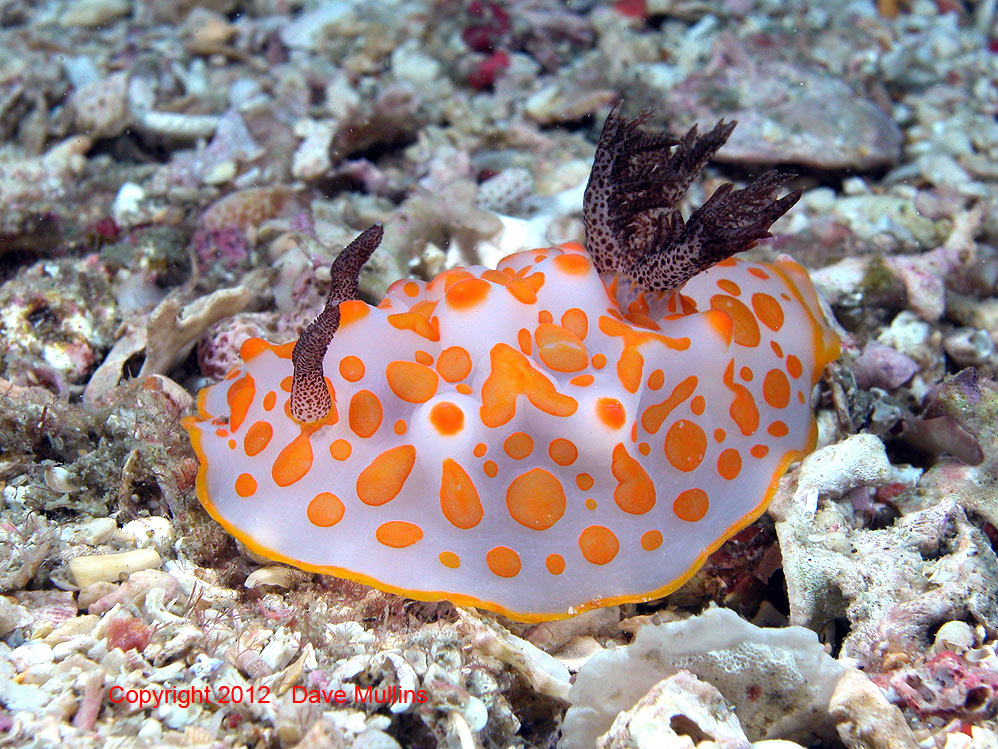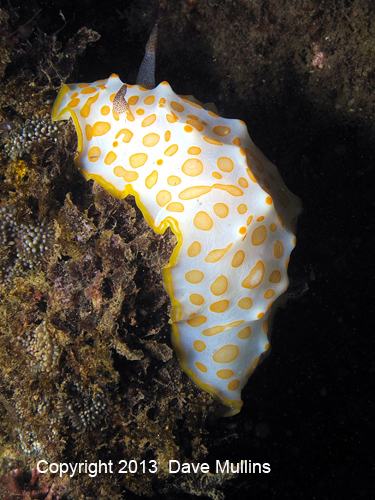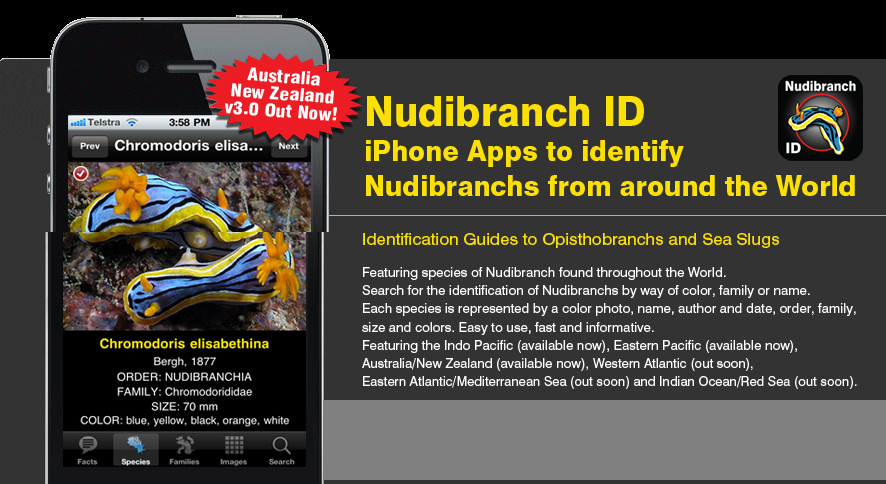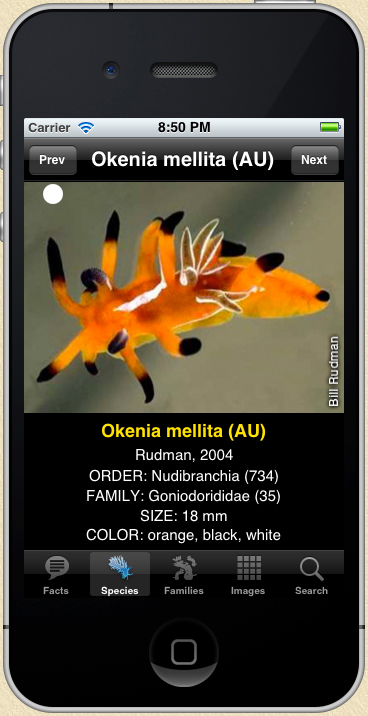 |
Halgerda aurantiomaculata
Image courtesy of Dave MullinsWall at Old Woman Island, Queensland, Australia
Canon G10 in Ikelite housing with one Inon Z220 strobe
Halgerda aurantiomaculata 130 mm
 |
Halgerda aurantiomaculata
(Allan, 1932)
During a recent excursion to one of our favourite dive haunts, The Wall at Old Woman Island we encountered an extraordinarily large specimen of Halgerda aurantiomaculata. Found here not uncommonly and normally in the 50 - 70 mm range, this whopper measured 130 mm and even then we don't believe it was fully stretched out at that length. This is a new size record for the species being almost twice the length of our or other accounts. Halgerda aurantiomaculata is assigned to the Discodorididae family of Nudibranchia. The Halgerda genus (first described by Berg in 1880) has members that are all quite distinctive and usually cannot be confused with others. The external features normally conform to a familiar arrangement. These include a firm jelly-like body, a broad oval mantle that completely covers the foot excepting the posterior-most portion, usually a high body profile with a notum of ridges (sometimes quite high) joining tubercles (not all species) and often a reticulum of lines on or between the ridges or otherwise spots. Halgerda aurantiomaculata has an opaque white mantle covered with orange/yellow spots and blotches of varying sizes and a narrow, continuous, orange mantle margin. This coloured marginal line is repeated on the foot. On the dorsum between the rhinophores and gills are three longitudinal rows of distinct tubercles each tipped with an orange spot and joined by low dipping ridges. The central row has four of these tubercles whilst the two lateral rows each have three. We have noted that the relative height of these tubercles varies considerably amongst individuals. |
The rhinophores are long, translucent and bear numerous small dark brown spots. The clavus is lamellate, tapered towards the tip and often carried crooked posteriorly on the stalk.
The four gills are sparsely branched and can be retracted into a pocket below the mantle. Like the rhinophores they are also translucent and covered in brown spots.
As with all species of Halgerda, H. aurantiomaculata feeds upon sponges in rocky habitats.
It is reported to have a distribution limited to coastal Queensland, the Great Barrier Reef and Melanesia (southern PNG, Vanuatu, New Caledonia and Fiji). Specimens have also been reported as far south as Lord Howe Island.
References:
Willan & Coleman 1984. Nudibranchs of Australia, Neville Coleman, AMPI, Sydney.
Willan, R.C., & G.D. Brodie. 1989. The nudibranch Halgerda aurantiomaculata (Allan, 1932) (Doridoidea: Dorididae) in Fijian waters. The Veliger 32(1):69-80.
Marshall & Willan 1999. Nudibranchs of Heron Island, Great Barrier Reef, Backhuys Publishers.
Cobb & Willan 2006. Undersea Jewels, ABRS, Canberra
Coleman N. 2008. Nudibranchs - Encyclopedia - Catalogue of Asi
Queensland, Australia
Jan. 2013
Send Dave email at marineimages@hotmail.com
or contact Gary Cobb directly at gary@nudibranch.com.au

|

|
